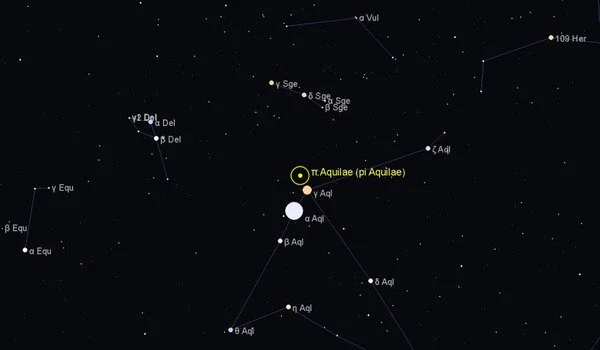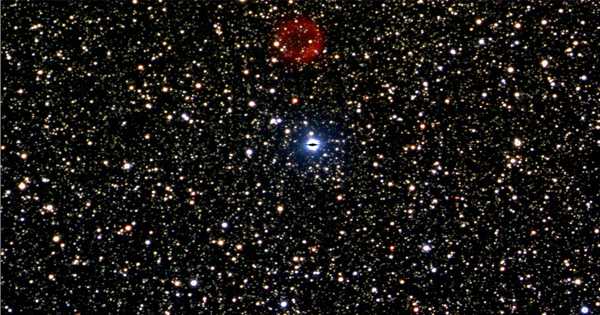Pi Aquilae is the Bayer designation for a binary star system in the equatorial constellation of Aquila, about 3° to the north of the bright star Altair. It is a variable and multiple giant star in the constellation Aquila. It’s a Giant Star. It is not part of the Aquila constellation outline, but it is within its borders. The star’s color is yellow based on its spectral type (G8III C).
Pi Aquilae has a visual magnitude of 5.72. The apparent visual magnitude of the system is 5.85, making it visible to the naked eye from dark suburban skies. Because of its relative faintness, Pi Aquilae should be visible only from locations with dark skies, and it should be invisible from skys affected by light pollution. Based on an annual parallax shift of 6.34 mas, the distance to this system is approximately 510 light-years (160 parsecs).
William Herschel discovered the binary nature of this system in 1785. The primary component of is a giant star with a magnitude of 6.47 and a stellar classification of G8 III: At an angular separation of 1.437 arcseconds, a companion star is an A-type main-sequence star with the classification A1 V. It has a slightly lower apparent magnitude of 6.75.

The estimated radius of Pi Aquilae is 10.26 times greater than that of the Sun. The radius of the Sun is 695,800 km, so the radius of the star is estimated to be 7,138,479.16 km. Simply multiply the radius by two to get the diameter of the star.
Pi Aquilae is a yellow giant star with a spectral type of G8III C. Based on the spectral type, we can deduce that the star’s surface temperature is in the range of 5,000 to 6,000 K, according to Harvard University notes.
The apparent magnitude of Pi Aquilae is 5.75, which is a measure of the star’s brightness as seen from Earth. Visual Magnitude is another name for apparent magnitude. The absolute magnitude of Pi Aquilae is -0.46 if you use the 1997 Parallax value. The absolute magnitude of Pi Aquilae is -0.24 if you use the 2007 Parallax value.
Absolute Magnitude is the apparent magnitude of a star as seen from a distance of 10 parsecs (32.6 light years). This assumes that nothing, such as dust clouds, stands between the object and the viewer. To truly compare the brightness of a star, use Absolute Magnitude rather than Apparent Magnitude.
















